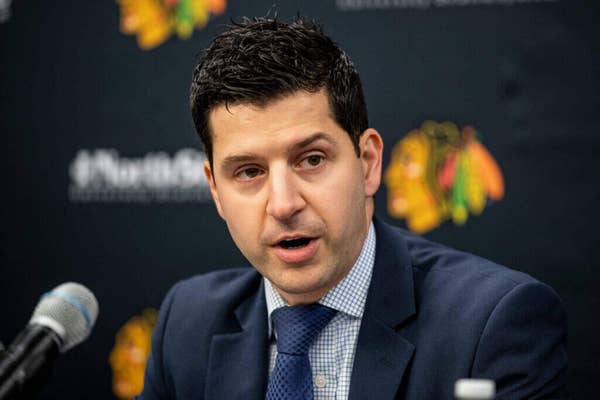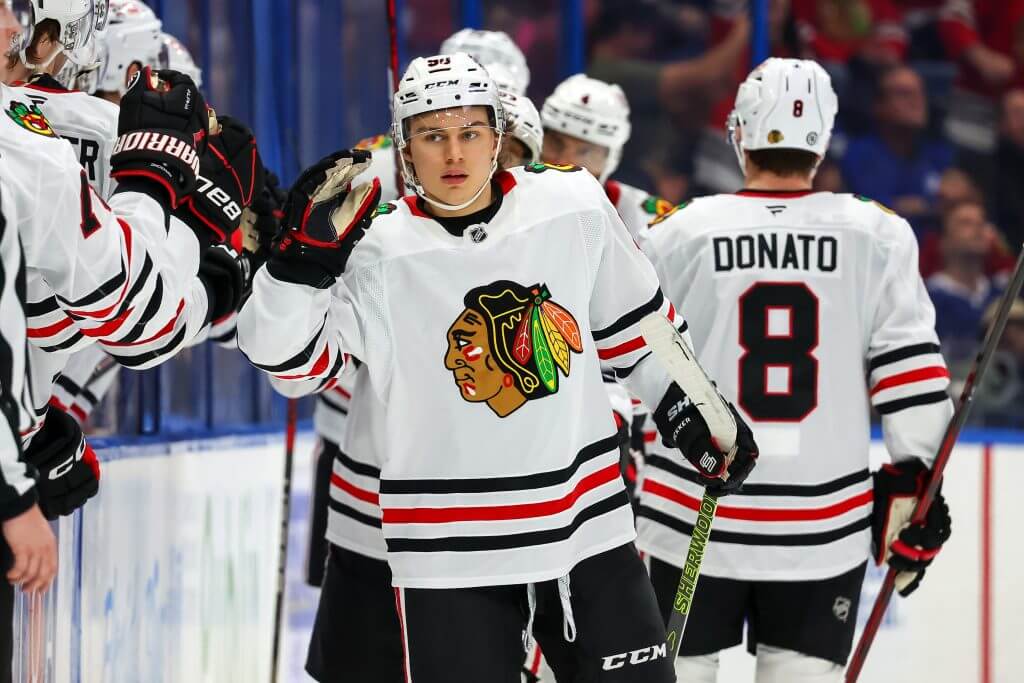
Chicago Blackhawks general manager Kyle Davidson is navigating the team’s rebuild with a long-term vision while balancing the immediate needs of the roster. Since initiating the rebuild in 2022, Davidson has remained focused on multiple phases of the process, understanding that while drafting Connor Bedard was a significant step, much more work is needed.
Connor Bedard’s Development in His Second NHL Season
Davidson is highly pleased with Bedard’s progress, particularly in adapting to the NHL and competing against elite talent despite being the second-youngest player in the league. While there are areas to improve, he has no doubts about Bedard’s ability to develop further. Davidson admires Bedard’s competitive mentality, especially his desire to challenge himself by playing against top players, as this experience will accelerate his growth.
Some initial concerns about Bedard’s size and defensive play at the NHL level have been addressed this season. He has demonstrated noticeable improvement in his two-way game, working on defensive awareness, puck stripping, and overall reliability in all three zones. Given that he has primarily been an offensive force throughout his career, the transition to a well-rounded center has been a gradual process. Davidson acknowledges that defensive play in the NHL is difficult, especially for a smaller player, but he has been encouraged by the strides Bedard has made and remains confident that this development will continue.
One of Bedard’s weaker areas this season has been faceoffs, where he has won only 35.3% of his draws. The coaching staff has reduced some of his faceoff responsibilities, occasionally allowing his wingers to take key draws. Davidson believes this is part of a natural learning curve, pointing out that many of the best faceoff specialists in the league are veteran players who have honed the skill over years of experience. He remains confident that Bedard’s faceoff ability will improve with time and practice.
Building a Competitive Roster Around Bedard

A frequent topic of discussion is whether Bedard needs a star-caliber linemate, akin to how Patrick Kane and Jonathan Toews played together during the Blackhawks’ championship years. Davidson acknowledges the importance of surrounding Bedard with talent but emphasizes that the priority is building a well-rounded, deep roster rather than focusing solely on acquiring a single superstar. The organization is exploring multiple avenues, including free agency, trades, and the draft, to add high-end talent.
While obtaining another elite player is an obvious goal, Davidson notes that every team in the league is looking for the same thing, making it a challenging process. He remains open to different roster-building strategies, whether it involves a top-heavy lineup with multiple superstars or a deeper, well-balanced roster. The ultimate objective is to create a sustainable winning team rather than relying on just one or two elite players.
Balancing Development and Cap Management in the Rebuild
Davidson acknowledges that the next few years will be particularly challenging as the team works to integrate top prospects into the NHL while remaining competitive. Several highly drafted players show significant promise, but most need additional time to develop before making a meaningful impact at the NHL level. The front office must carefully balance cap management, ensuring they reach the salary cap floor while also investing in player development.
He notes that while Bedard’s presence accelerates certain aspects of the rebuild, there is still an entire team that must be constructed around him. The organization remains patient, allowing young players to develop at their own pace rather than rushing them into the NHL before they are ready.
Trade and Draft Strategy Moving Forward
With the Blackhawks likely securing another top-five pick in the upcoming draft, Davidson does not rule out the possibility of trading the selection if it helps accelerate the rebuild. If an opportunity arises to acquire a high-value NHL player using the draft pick, the team will consider it. However, given the difficulty of making such trades, the front office remains open to adding another young prospect to their pipeline through the draft.
Regarding salary cap flexibility, Davidson is uncertain about how other teams will approach spending with the cap increasing in the coming years. While some teams may struggle to reach the cap ceiling, he does not believe this will negatively impact the Blackhawks’ ability to build a competitive roster.
Cap Strategy and Contract Management
Davidson believes the addition of Chris O’Hearn as vice president of hockey operations will help the organization navigate cap management more effectively. With the salary cap projected to rise, O’Hearn’s expertise in contract negotiations and financial strategy will be valuable in shaping the team’s future.
One of the most significant financial decisions in the coming years will be Bedard’s next contract. Davidson acknowledges that structuring contracts for key young players will significantly impact the team’s long-term outlook. The front office aims to maintain enough cap space to build depth and ensure financial flexibility while retaining core talent.
Playing Style and Prospect Development
Davidson envisions the Blackhawks developing an aggressive, high-tempo playing style that emphasizes relentless puck pursuit. He believes the team has drafted players who can eventually fit this system, bringing speed, skill, and versatility. The goal is to create a lineup that can adapt to different game situations while maintaining a strong competitive identity.
Regarding the team’s top college prospects, Davidson is prepared for the possibility of some players signing contracts and joining the NHL lineup late in the season. However, he emphasizes that these decisions will depend on discussions with the players and their representatives. One prospect of particular interest is Oliver Moore, who has shown promising development at the University of Minnesota. The organization will evaluate his situation at the end of his college season before determining the next steps.
Conclusion
The Blackhawks’ rebuild remains a work in progress, with multiple layers of development, roster construction, and financial planning involved. Davidson remains patient but proactive, evaluating all possible options to enhance the team’s future while maintaining flexibility. While there is excitement around Bedard’s potential and the influx of young talent, the organization remains committed to a calculated and strategic approach to ensure long-term success.